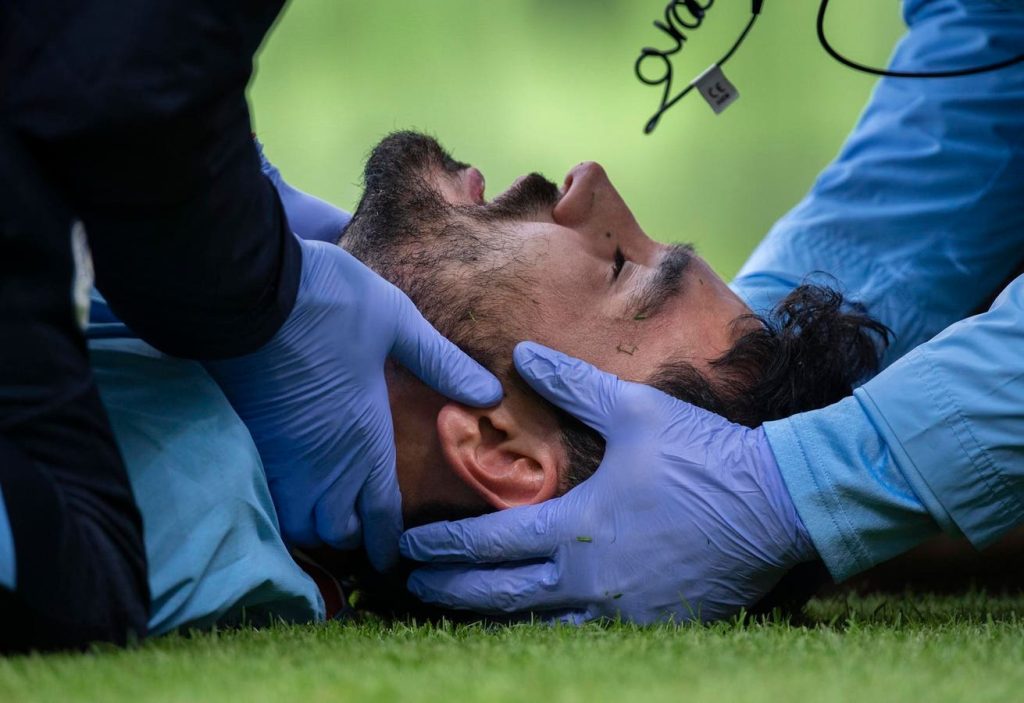The following is part of a series on brain-machine integration and biomechanical solutions to restore function to tissues damaged by disease, trauma, or time.
Advances in MRI microstructure biomarker identification may help stop long-term brain injury in athletes before it’s too late. Every year in the United States, roughly 2 million sports-related concussions occur. It is estimated that about 10% of contact sport athletes will be concussed yearly, leading to significant brain traumas over time, most notably chronic traumatic encephalopathy.
Chronic traumatic encephalopathy is the degeneration of nerve cells in the brain over time, accelerated by head trauma. Chronic traumatic encephalopathy was not widely recognized in the sports community until recently, likely due to the disease only being diagnosed upon autopsy. A recent study from Boston University found that over 90% of NFL players had chronic traumatic encephalopathy while alive, compared to nearly none of the non-athlete brains examined.
Brain injury accounts for most fatalities in football and other high-impact contact sports, but what if there were a way to flag at-risk athletes before long-term damage developed? Chen et al. from New York University investigated the MRI results from 81 athletes to find clues as to how repeated head impacts affected the brain and whether biomarkers could be identified for long-term injury.
Examing athletes from both contact sports, such as football, as well as noncontact sports, such as baseball or cross-country running, Chen et al. analyzed the MRI scans of each set. An MRI uses magnetic imaging technologies to create a three-dimensional brain rendering for diagnostics. While chronic traumatic encephalopathy is not diagnosable before death, Chen et al. aimed to find identifiers for early-onset brain injury.
Among the various brain scan characteristics used to differentiate the patients, three were most indicative of brain injury: mean diffusivity, mean kurtosis, and radial extra-axonal compartment diffusion.
Mean diffusivity is the average diffusion of water molecules in the brain. Diffusivity reflects interactions with other obstacles in the brain, such as macromolecules, fibers, and membranes, highlighting the tissue architecture of the brain. Mean diffusivity had been previously used to analyze brain tumors and Alzheimer’s.
Mean kurtosis is a metric used to describe average brain microstructure complexity. Typically, the more complex the brain’s neural network, the better the long-term brain health of the patient.
Radial extra-axonal compartment diffusion refers to the movement of molecules around the axons of our brains. Axons are branches of nerve fibers that generate thousands of synaptic terminals for the nervous system to conduct bodily functions. If the movement of these molecules is impacted by, for instance, repeated brain impacts, regular nerve functioning becomes much less efficient.
In all three characteristics, brains that experienced chronic head injury had widely differentiating metrics compared to what would be expected in typical brains. Athlete brains with forced injury are less microstructurally complex, have impeded diffusion of water molecules in the brain, and have less efficient molecular movement around critical axons of the nervous system.
Regular MRI scans of athletes in their twenties and thirties should be implemented in collegiate and professional levels of contact sports to be on the lookout for these early biomarkers. While brain injury is unlikely to be prevented in contact sports, understanding how early trauma impacts long-term health could improve safety technologies. Helmet construction, for instance, has improved drastically over the past decade, leading to less aggressive force transferred to the brain.
If risk factors such as the three described above influence the development of safety features in sports, long-term trends of brain injury in athletes could be improved in the decades to come.
Short of removing contact sports from the cultural zeitgeist, safety precautions are our best chance to improve players’ long-term health. We look forward to seeing how Chen et al.’s work influences the future of contact sports.
To read more of this series, please visit www.williamhaseltine.com
Read the full article here










